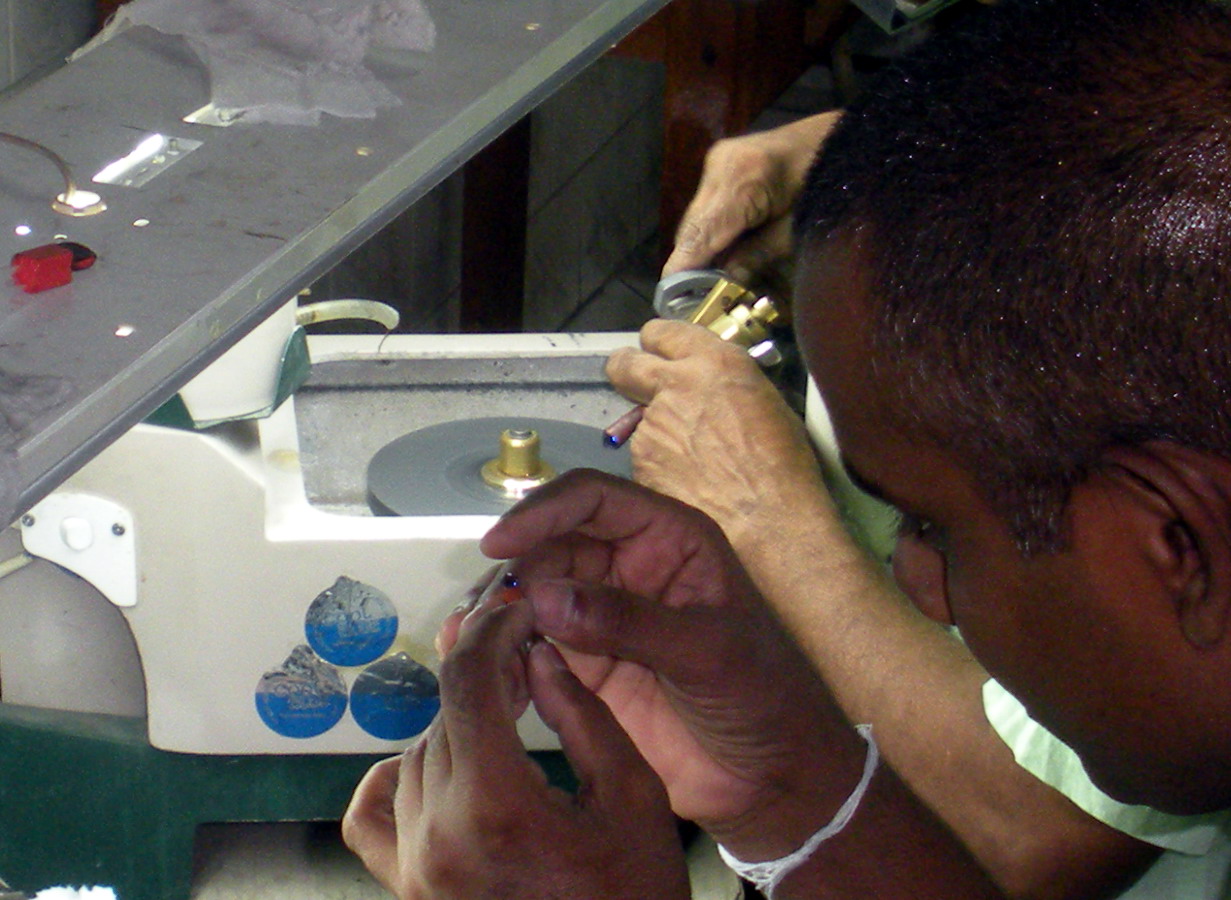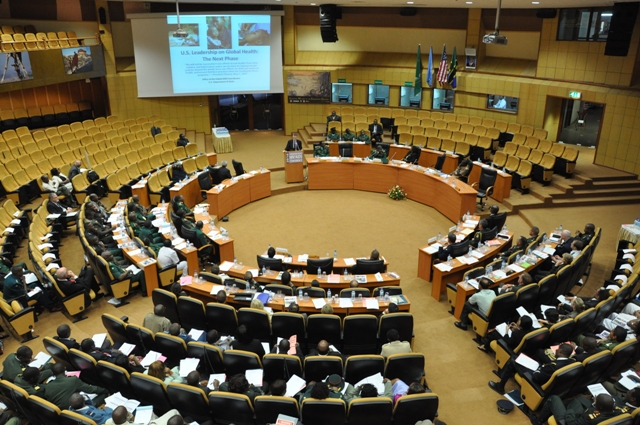|
Tanzanite
Tanzanite is the blue and violet variety of the mineral zoisite (a calcium aluminium hydroxyl sorosilicate), caused by small amounts of vanadium. Tanzanite belongs to the epidote mineral group. Tanzanite is only found in Simanjiro District of Manyara Region in Tanzania, in a very small mining area approximately long and wide near the Mererani Hills. Tanzanite is noted for its remarkably strong trichroism, appearing alternately blue, violet and burgundy depending on crystal orientation. Tanzanite can also appear differently when viewed under different lighting conditions. The blues appear more evident when subjected to fluorescent light and the violet hues can be seen readily when viewed under incandescent illumination. In its rough state tanzanite is coloured a reddish brown to clear, and it requires heat treatment to remove the brownish "veil" and bring out the blue violet of the stone. The gemstone was given the name "tanzanite" by Tiffany & Co. after Tanzania, the c ... [...More Info...] [...Related Items...] OR: [Wikipedia] [Google] [Baidu] [Amazon] |
Jumanne Mhero Ngoma
Jumanne Mhero Ngoma (1939 - January 2019) is a Tanzanian man who is credited for discovering the gemstone tanzanite. Biography Jumanne Mhero Ngoma was born in the Same District, Kilimanjaro and relocated to the then-Arusha Region of Tanzania at an early age. In January 1967, at the age of 28, Ngoma discovered tanzanite at the Mirerani hills in the Kiteto district of the then Arusha Region (presently Manyara Region). He claims that the initial analysis through the Tanzanian geological laboratory at the city of Dodoma identified the gemstone as a variety of the mineral zoisite. Three years later, he was issued with a certificate of recognition by then-Tanzanian president Julius Nyerere and a financial reward of Tsh 50,000 for his discovery. In 1984, he was given a certificate for the scientific discovery by the Tanzania Commission for Science and Technology. Despite discovering the rare mineral and the subsequent industry, it was found that Ngoma and his family had lived a struggli ... [...More Info...] [...Related Items...] OR: [Wikipedia] [Google] [Baidu] [Amazon] |
Manyara Region
Manyara Region (''Mkoa wa Manyara'' in Swahili language, Swahili) is one of Tanzania's 31 administrative Regions of Tanzania, regions. The regional capital is the town of Babati. According to the 2012 national census, the region had a population of 1,425,131, which was lower than the pre-census projection of 1,497,555.Population Distribution by Administrative Units, United Republic of Tanzania, 2013 For 2002–2012, the region's 3.2 percent average annual population growth rate was tied for the third highest in the country. It was also the 22nd most densely populated region with 32 people per square kilometre. Lake Manyara is in the northern p ... [...More Info...] [...Related Items...] OR: [Wikipedia] [Google] [Baidu] [Amazon] |
Birthstone
A birthstone is a gemstone that represents a person's birth period, usually the month or zodiac sign. Birthstones are often worn as jewelry or a pendant necklace. History of birthstones Western custom The first-century historian Josephus believed there was a connection between the twelve stones in Aaron's breastplate (signifying the tribes of Israel, as described in the Book of Exodus), the twelve months of the year, and the twelve signs of the zodiac. Translations and interpretations of the passage in Exodus regarding the breastplate have varied widely, with Josephus himself giving two different lists for the twelve stones. George Frederick Kunz argues that Josephus saw the breastplate of the Second Temple, not the one described in Exodus. St. Jerome, referencing Josephus, said the Foundation Stones of the New Jerusalem ( Revelation 21:19–20) would be appropriate for Christians. In the eighth and ninth centuries, religious treatises associating a particular stone wi ... [...More Info...] [...Related Items...] OR: [Wikipedia] [Google] [Baidu] [Amazon] |
Sorosilicate
Silicate minerals are rock-forming minerals made up of silicate groups. They are the largest and most important class of minerals and make up approximately 90 percent of Earth's crust. In mineralogy, the crystalline forms of silica (silicon dioxide, ) are usually considered to be tectosilicates, and they are classified as such in the Dana system (75.1). However, the Nickel-Strunz system classifies them as oxide minerals (4.DA). Silica is found in nature as the mineral quartz, and its polymorphs. On Earth, a wide variety of silicate minerals occur in an even wider range of combinations as a result of the processes that have been forming and re-working the crust for billions of years. These processes include partial melting, crystallization, fractionation, metamorphism, weathering, and diagenesis. Living organisms also contribute to this geologic cycle. For example, a type of plankton known as diatoms construct their exoskeletons ("frustules") from silica extracted from seawat ... [...More Info...] [...Related Items...] OR: [Wikipedia] [Google] [Baidu] [Amazon] |
Zoisite
Zoisite, first known as saualpite, after its type locality, is a calcium aluminum hydroxy sorosilicate belonging to the epidote group of minerals. Its chemical formula is Ca2 Al3( Si O4)(Si2O7)O(O H). Zoisite occurs as prismatic, orthorhombic (2/m 2/m 2/m) crystals or in massive form, being found in metamorphic and pegmatitic rock. Zoisite may be blue to violet, green, brown, pink, yellow, gray, or colorless. Blue crystals are known under the name tanzanite. It has a vitreous luster and a conchoidal to uneven fracture. When euhedral, zoisite crystals are striated parallel to the principal axis (c-axis). Also parallel to the principal axis is one direction of perfect cleavage. The mineral is between 6 and 7 on the Mohs hardness scale, and its specific gravity ranges from 3.10 to 3.38, depending on the variety. It streaks white and is said to be brittle. Clinozoisite is a more common monoclinic polymorph of Ca2Al3(SiO4)(Si2O7)O(OH). Transparent material is fashioned ... [...More Info...] [...Related Items...] OR: [Wikipedia] [Google] [Baidu] [Amazon] |
Trichroism
Pleochroism is an optical phenomenon in which a substance has different colors when observed at different angles, especially with polarized light. Etymology The roots of the word are from Greek (). It was first made compound in the German term ''Pleochroismus'' by mineralogist Wilhelm Haidinger in 1854, in the journal ''Annalen der Physik und Chemie''. Its first known English usage is by geologist James Dana in 1854. Background Anisotropic crystals will have optical properties that vary with the direction of light. The direction of the electric field determines the polarization of light, and crystals will respond in different ways if this angle is changed. These kinds of crystals have one or two optical axes. If absorption of light varies with the angle relative to the optical axis in a crystal then pleochroism results. Anisotropic crystals have double refraction of light where light of different polarizations is bent different amounts by the crystal, and therefore follows ... [...More Info...] [...Related Items...] OR: [Wikipedia] [Google] [Baidu] [Amazon] |
Dichroism
In optics, a dichroic material is either one which causes visible light to be split up into distinct beams of different wavelengths (colours) (not to be confused with Dispersion (optics), dispersion), or one in which light rays having different Polarization (waves), polarizations are absorbed by different amounts. In beam splitters The original meaning of ''dichroic'', from the Greek language, Greek ''dikhroos'', two-coloured, refers to any optical device which can split a beam of light into two beams with differing wavelengths. Such devices include mirrors and dichroic filter, filters, usually treated with optical coatings, which are designed to reflect light over a certain range of wavelengths and transmit light which is outside that range. An example is the dichroic prism, used in some camcorders, which uses several coatings to split light into red, green and blue components for recording on separate charge-coupled device, CCD arrays, however it is now more common to have a Ba ... [...More Info...] [...Related Items...] OR: [Wikipedia] [Google] [Baidu] [Amazon] |
Dumortierite
Dumortierite is a fibrous variably colored aluminium boro-silicate mineral, Al7BO3(SiO4)3O3. It crystallizes in the orthorhombic system typically forming fibrous aggregates of slender prismatic crystals. The crystals are vitreous and vary in color from brown, blue, and green to more rare violet and pink. Substitution of iron and other tri-valent elements for aluminium results in the color variations. It has a Mohs hardness of 7 and a specific gravity of 3.3 to 3.4. Crystals show pleochroism from red to blue to violet. Dumortierite quartz is blue colored quartz containing abundant dumortierite inclusions. Dumortierite was first described in 1881 for an occurrence in Chaponost, in the Rhône-Alps of France and named for the French paleontologist Eugène Dumortier (1803–1873). It typically occurs in high temperature aluminium rich regional metamorphic rocks, those resulting from contact metamorphism and also in boron rich pegmatites. The most extensive investigation on dumort ... [...More Info...] [...Related Items...] OR: [Wikipedia] [Google] [Baidu] [Amazon] |
Peridot
Peridot ( ), sometimes called chrysolite, is a yellow-green transparent variety of olivine. Peridot is one of the few gemstones that occur in only one color. Peridot can be found in mafic and ultramafic rocks occurring in lava and peridotite xenoliths of the mantle. The gem occurs in silica-deficient rocks such as volcanic basalt and pallasitic meteorites. Along with diamonds, peridot is one of only two gems observed to be formed not in Earth's crust, but in the molten rock of the upper mantle. Gem-quality peridot is rare on Earth's surface due to its susceptibility to alteration during its movement from deep within the mantle and weathering at the surface. Peridot has a chemical formula of . Peridot is one of the birthstones for the month of August. Etymology The origin of the name ''peridot'' is uncertain. The ''Oxford English Dictionary'' suggests an alteration of Anglo– Norman (classical Latin -), a kind of opal, rather than the Arabic word , meaning "gemstone". Th ... [...More Info...] [...Related Items...] OR: [Wikipedia] [Google] [Baidu] [Amazon] |
Olivine
The mineral olivine () is a magnesium iron Silicate minerals, silicate with the chemical formula . It is a type of Nesosilicates, nesosilicate or orthosilicate. The primary component of the Earth's upper mantle (Earth), upper mantle, it is a common mineral in Earth's subsurface, but weathers quickly on the surface. Olivine has many uses, such as the gemstone peridot (or chrysolite), as well as industrial applications like metalworking processes. The ratio of magnesium to iron varies between the two endmember (mineralogy), endmembers of the solid solution series: forsterite (Mg-endmember: ) and fayalite (Fe-endmember: ). Compositions of olivine are commonly expressed as Mole (unit), molar percentages of forsterite (Fo) and/or fayalite (Fa) (''e.g.'', Fo70Fa30, or just Fo70 with Fa30 implied). Forsterite's melting temperature is unusually high at atmospheric pressure, almost , while fayalite's is much lower – about . Melting temperature varies smoothly between the two end ... [...More Info...] [...Related Items...] OR: [Wikipedia] [Google] [Baidu] [Amazon] |
Arusha
Arusha is a city in Tanzania. The city is the Capital city, capital of the Arusha Region. It has a population of 617,631 people.Citypopulation.de Population of the major cities in Tanzania Located below Mount Meru (Tanzania), Mount Meru on the eastern edge of the eastern branch of the East African Rift, Great Rift Valley, Arusha region has a temperate climate. The region is close to the Serengeti National Park, the Ngorongoro Conservation Area, Lake Manyara National Park, Olduvai Gorge, Tarangire National Park, Mount Kilimanjaro, and Mount Meru (Tanzania), Mount Meru in the Arusha National Park. The region is a major international diplomatic hub. It hosts the African Court on Human and Peoples' Rights, African Court of the African Union and is the capital of the East African Community. From 1994 t ... [...More Info...] [...Related Items...] OR: [Wikipedia] [Google] [Baidu] [Amazon] |






